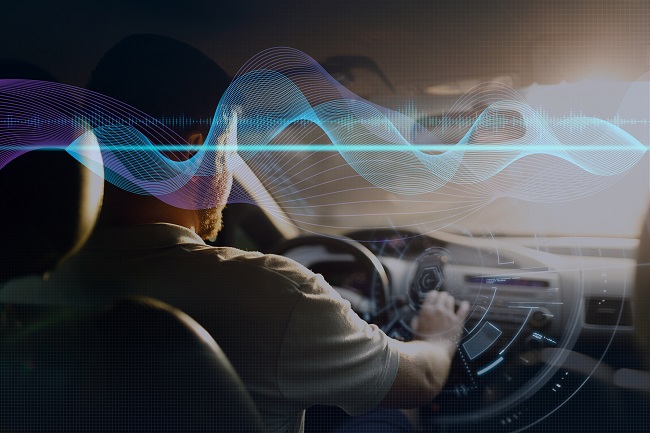A collaboration between VI-grade and BlackBerry QNX has enabled real-time active sound design for the entire vehicle soundscape through the integration of QNX’s Active Sound Design (ASD) software with VI-grade’s NVH Simulator.
Vehicle sounds are typically formed in a studio away from other vehicle sounds – of the engine, tires, wind and other sources – and are therefore often not right for the actual vehicle environment. This can be a time consuming and costly process as these sounds, which are subsequently tested on real prototype vehicles, must be then recreated from scratch if not suitable.
“Design of active sound profiles, whether for engine sound enhancement, electric vehicle sound enhancement or exterior sound for meeting Acoustic Vehicle Alerting Systems standards, used to be performed separately from the noise and vibration aspects of the vehicle. The active sound design sound profiles were first developed in the ‘vacuum’ of the studio, and then combined with the rest of the vehicle sounds only on actual vehicles, which of course requires prototype vehicles and significant time horizons,” said Dave Bogema, director of NVH solutions at VI-grade.
Developers can now work more interactively with a complete NVH simulation of the target vehicle and experience the sound design in a highly realistic way. The VI-grade NVH Simulator connects QNX’s ASD software to other sound and real-time data sources in the vehicle so that tests and modifications can be done much earlier in the design process.
Bogema continued, “With this combination of technology, sounds can be designed and tuned on a computer, in the context of all other vehicle sounds, over the entire operating envelope of the vehicle, and evaluated with a free driving, driver-in-the-loop simulation, drastically reducing the need for prototype vehicle testing and tuning.”
Len Layton, acoustics business development manager, BlackBerry QNX, added, “We are thrilled to announce this partnership with VI-grade. The integration of QNX ASD with the VI-grade NVH Simulator allows automotive sound designers and NVH engineers to design and tune sounds for vehicles much faster and more efficiently than ever before, eliminating slow and costly development on prototype vehicles and moving this development to the desktop. By designing sounds with the full vehicle soundscape as context, better sounds can be designed and implemented faster.”


